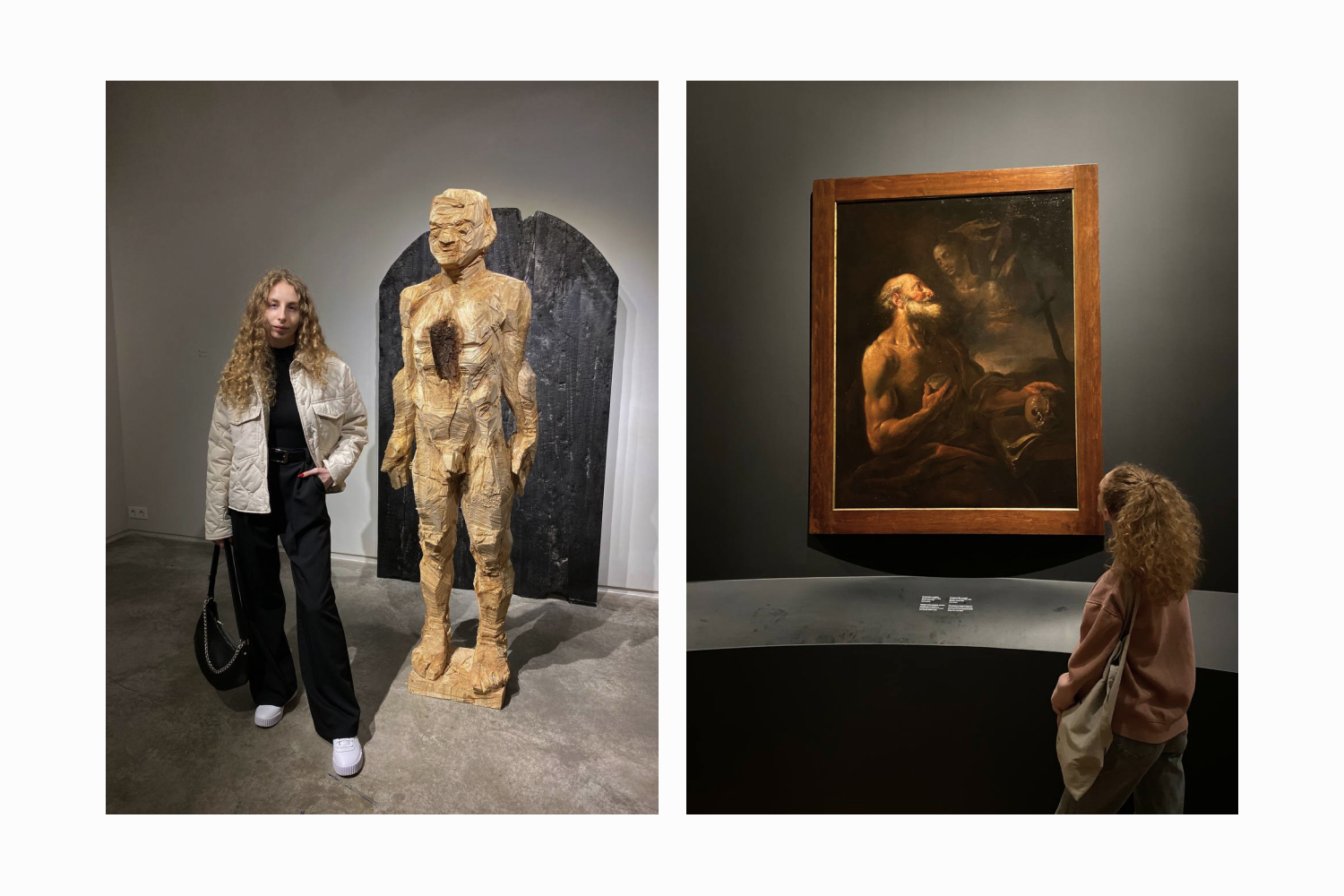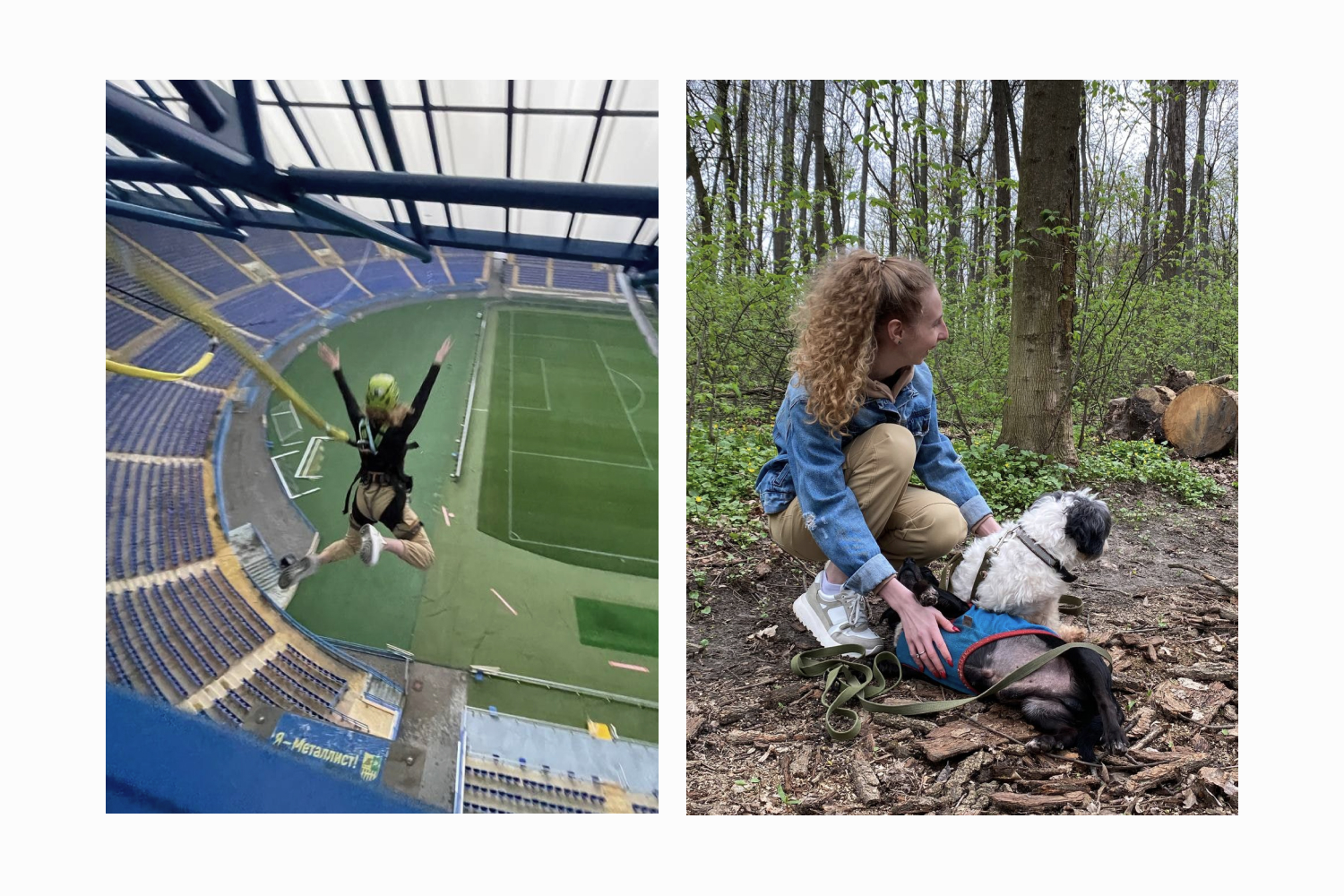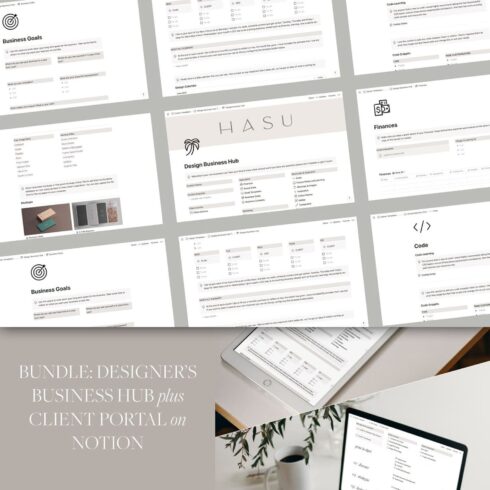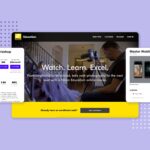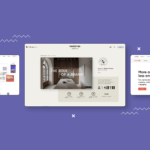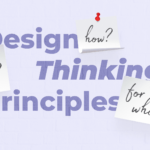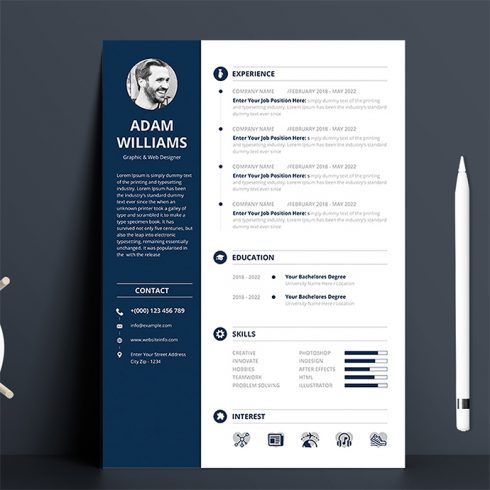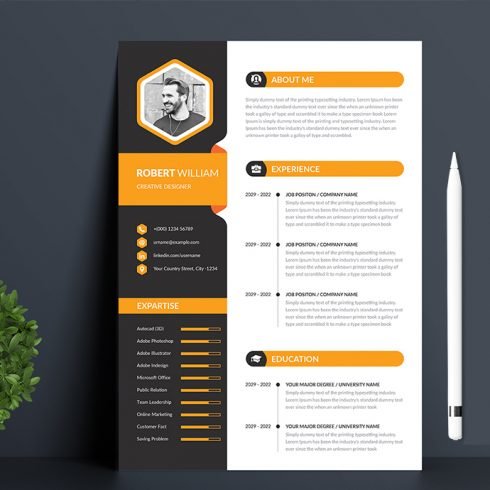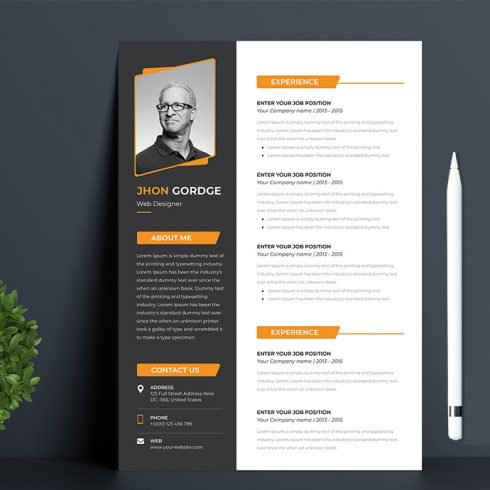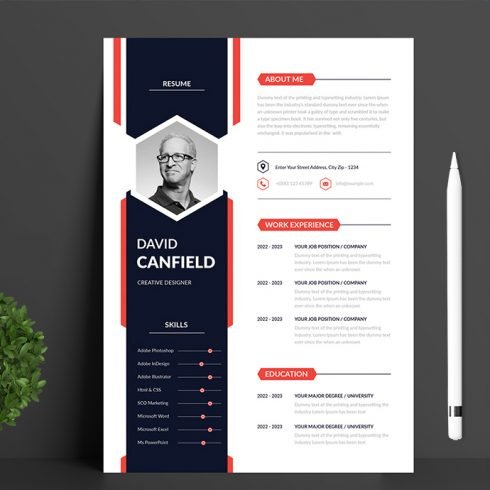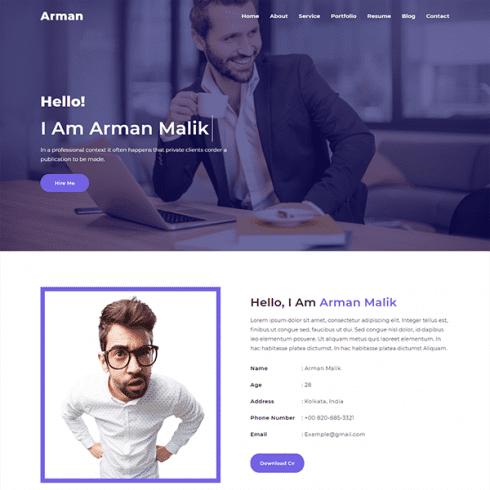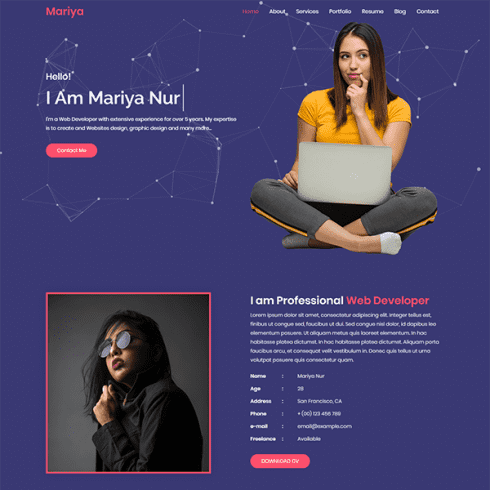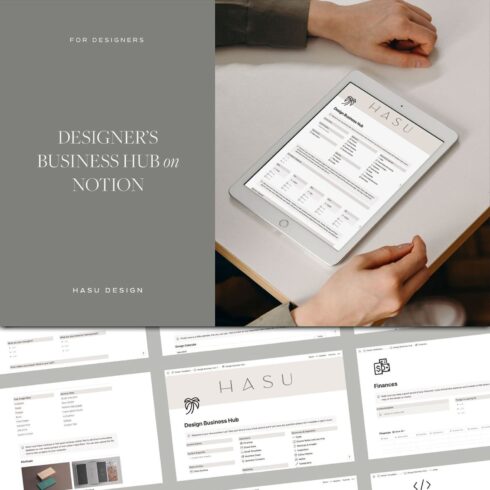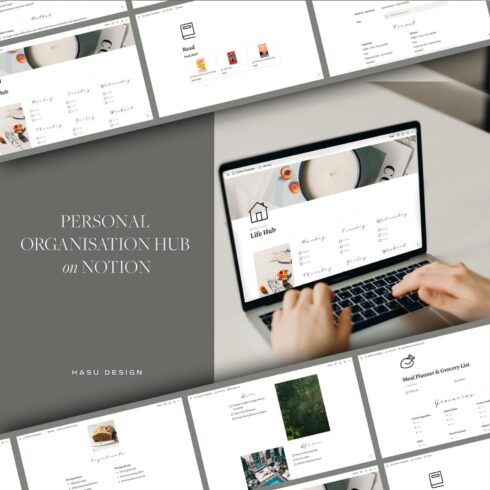From Executive Assistant to Graphic Designer in a Year: Valeria’s Inspiring Story
Recently, I’ve had the pleasure to chat with Valeria – a talented graphic designer from Ukraine – and this conversation made me think that her unconventional journey might be really inspiring for beginning graphic designers.
Being self-taught with a degree far from something creative, she found her first clients during Ukraine’s most challenging and unstable time – the full-scale Russian invasion.
Currently, she collaborates with MasterBundles as a content creator and creates brand identity for labels.
In our cozy conversation, we covered such topics as the beginning of the professional graphic design path, the organization of the learning and working process, the first difficulties, and ways to cope with them. It ended up being inspiring indeed. Hence, I gladly invite you to read it and share your thoughts in the comments 🙂
How did your path as a graphic designer start?
In 2021, I worked as an executive assistant, and our designer went on an extended vacation. The team was small, and no one could assume her duties. Since I was open to various tasks and loved designing presentations at the university, I took on some tasks. The first one was designing a newsletter. In the process, I watched Photoshop video tutorials, surfed Pinterest for inspiration, and produced a satisfying result.
I am grateful that my path began precisely with practice and the theory was tightened in the process.
Looking back, can you say that interest in art, design, and creativity has been chasing you throughout your life?
Definitely yes. As a child, I loved drawing, writing poetry, and taking photos of nature.
At the university, I enjoyed preparing presentations and doing creative tasks rather than calculating economic indicators. I actively photographed and even planned to be a professional photographer. But life directed me to design.
What were the main difficulties that you faced on your path as a graphic designer? How did you deal with them?
The main problem for me is finding clients and the impostor syndrome when it always seems you are doing everything wrong. I’m still coping with the first problem – I just began to treat it more calmly.
You need to create a portfolio, and it’s not a shame to be the first to write to people with a job offer, use different search channels, and maintain social networks.
It is also worth testing different types of work and choosing the one that is convenient for you. You might enjoy designing to sell on platforms or working as an in-house brand designer for an agency. Find what brings you pleasure.
I dealt with the impostor syndrome through communication with a psychologist. I recommend not delaying this and consulting a specialist. You will be surprised what a wonderful life may be without the feeling of “I’m not doing enough” 🙂
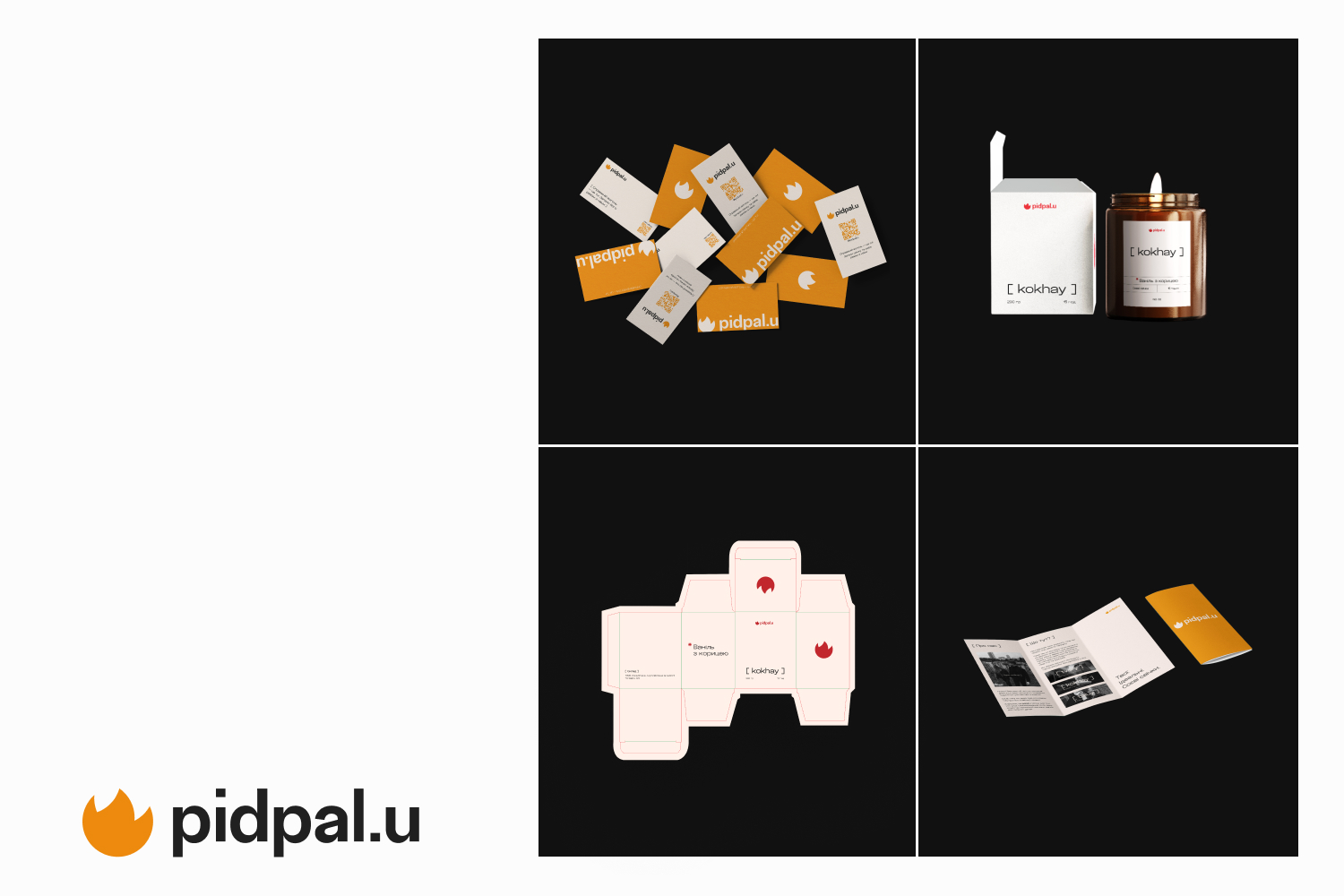
How do you find your clients?
Most of my clients come to me through recommendations, but I’m currently working on reaching out to new clients. I plan to update my portfolio on multiple platforms like Behance, Dribbble, and Pinterest to do this.
I made the mistake of designing my portfolio in PDF format and not updating it for a while. It takes a lot of time to gather all my worthy latest projects. I recommend not making the same mistake and updating your portfolio immediately after completing a project.
I also create content on social networks and try to be more active in different communities where I talk about myself.
I also plan to look for brands and make unique CPs with a proposal to improve the design.
How do you organize your professional space and routine? Are there any rules and principles you stick to?
I am an aesthete and like having fresh flowers on my table. It is vital for me that there is a minimum of things on the table: water/tea, a notebook, a pen, a laptop, and headphones. I always try to keep order and not store trash on the table.
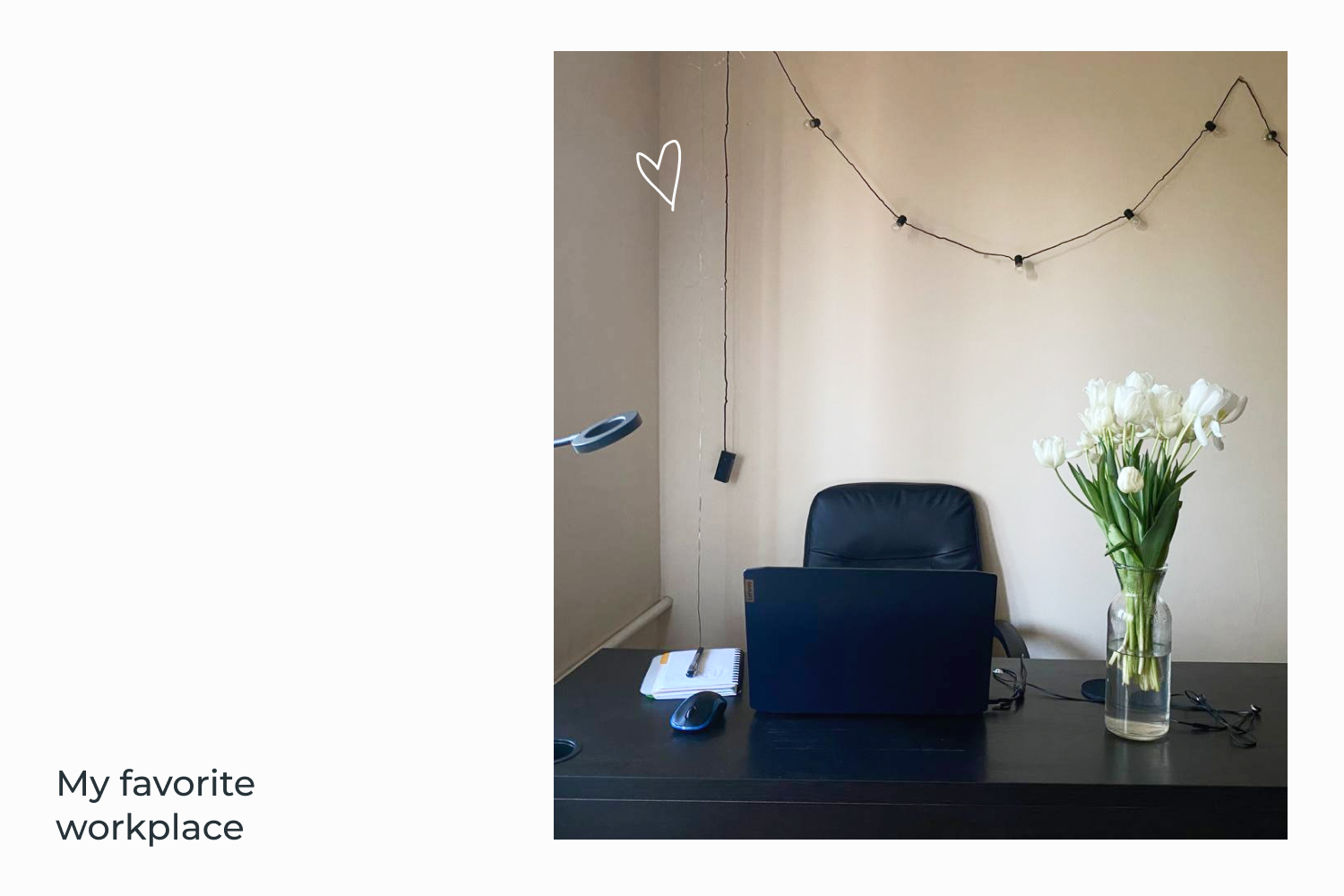
I’m currently searching for a convenient format for planning and tracking projects. I have a Google spreadsheet where I keep tasks for different projects in different tabs. I also create a to-do list in a notebook – it helps me not plan too many daily tasks.
I also adhere to the planning method when tasks are divided into important and additional ones.
Another workflow feature is listening to videos/podcasts in the background. I work 80% of the time with other people talking. This makes it easier for me to focus on tasks.
Where do you get inspiration for work? Is inspiration important for graphic designers?
Inspiration is essential. It helps to find exciting solutions to design problems.
I get it from nature, music, other designs, architecture, photography, theater, and cinema. In general, everything around can inspire. Designers should look beyond design platforms to replace new shapes, color combinations, textures, etc.
What do you do now as a designer? Are you a freelancer? What projects are you currently dealing with?
I chose freelance. I need to build and control my schedule, work with different projects and people, be free to choose projects, and be a partner, not an employee.
Now, I work with several marketing agencies and am looking for my clients.
I am currently engaged in branding – the creation of logos, corporate identity, and related stuff. I love that I can dive deeper into the project and show my values through the visuals. I want to be one of the best at this.
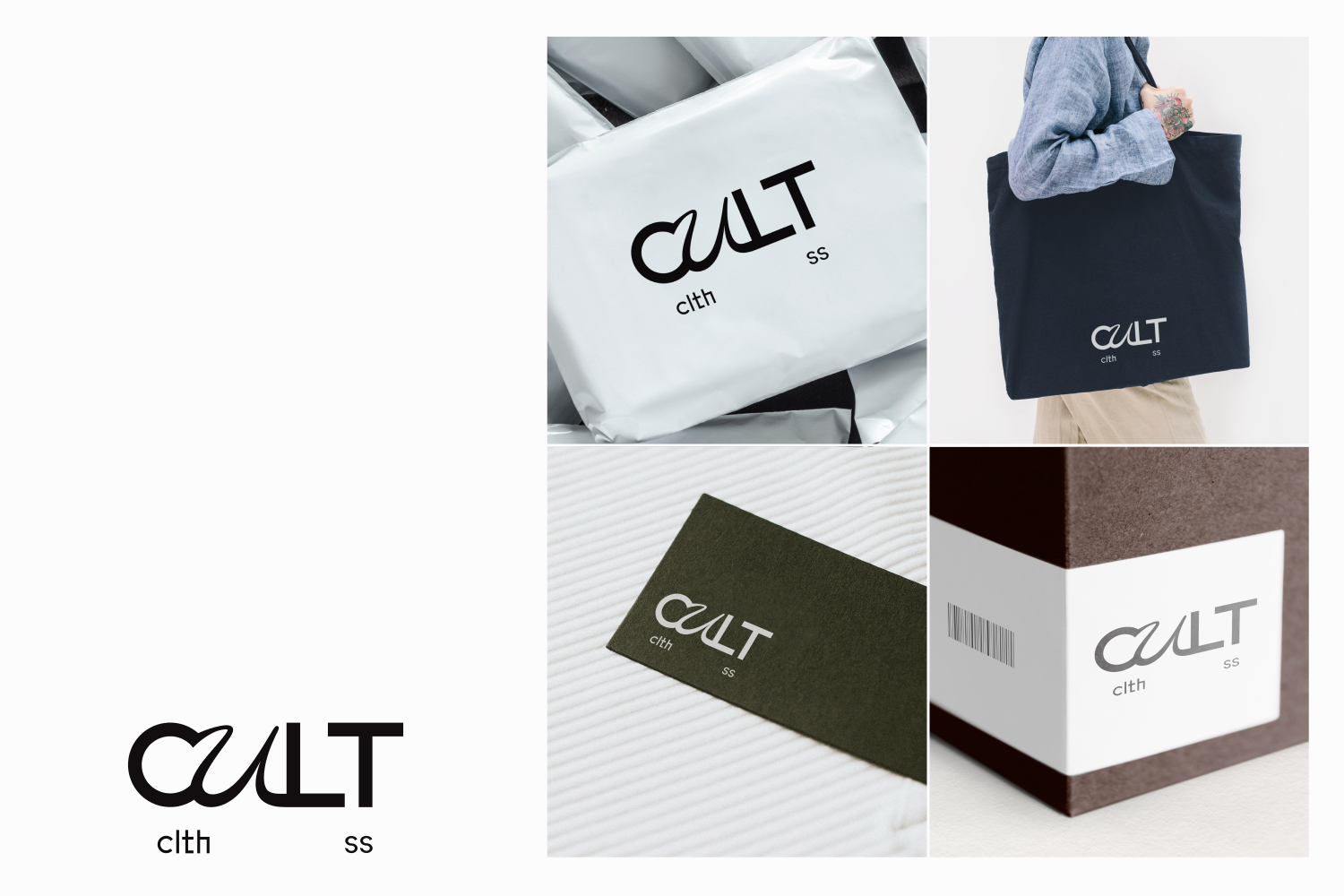
How do you deal with the instability of freelancing? Are there any tips you can give to freelancers?
The fact that you are responsible for your earnings can be overwhelming, but I take it easy because I chose this path myself. However, financial instability is one of the main disadvantages of freelancing for me. Freedom of action offsets this disadvantage for me.
I will be honest – there are moments when I cry. This happens when I realize I have earned less than planned or been left without clients. Moments like this are part of the journey, and you must keep working.
This can be minimized if you:
- take care of your financial cushion in case of unemployment;
- invest;
- active in different communities;
- develop your personal brand;
- improve your portfolio;
- pump your skills;
- promote your services.
It is important to arrange the work to have a customer flow. It is better to refuse or recommend other designers than to have no clients.
Don’t worry if it doesn’t work right away. Think about how you can change it, what else you can try and do it 🙂
Tell us more about your collaboration with MasterBundles.
With the beginning of the war in Ukraine, I was left without my old clients, so I was looking for a job. I actively responded to all vacancies, including a job post from MasterBundles.
Initially, I thought that they were looking for a social media designer. It turned out that they were looking for a designer to write in-depth expert articles, and I wrote the first two articles. That’s how I became a content creator on MasterBundles.
We jointly created practical lessons for designers, reviewed design styles, rebranded the blog design, and did many other cool things 🙂
Some of Valeria’s articles:
- Say No to Creative Burnout: 5 Easy Steps to Support Yourself for Designers
- Bauhaus Graphic Design: How to Convey Complex Meaning with Simple Solutions
- 10+ Christmas Card Ideas & Step-By-Step Video Tutorial
- Design Thinking Principles: The Cornerstones of Problem-Solving
Creative souls keep entering the graphic design industry. Let’s address them and start from the very bottom. How can a person understand that a graphic design job is worth considering?
If related thoughts come to one’s mind, it is worth trying. You can read about the features of the work, see what directions there are, and start with free tutorials on YouTube.
You can also get to know the designers and ask them about their impressions of their work, ask for recommendations, etc.
If you don’t try, you’ll never know if it was worth it. Most importantly, listen to yourself and your desires 🙂
What are the first steps a novice should take on this path?
First, I recommend researching the directions of design and its features. Then choose a few that you are interested in the most.
I wouldn’t recommend paying for courses immediately. Try free tutorials and courses first. Also, try to get to know the designers and learn from them about the challenges and benefits of working.
If you like it, I’d recommend finding a mentor. The main thing is to choose a practitioner with experience and knowledge. Ask them to share some theory and practice tips with you.
Individual work will help you understand the design better and improve your skills.
I recommend learning on real projects. Ask your friends and acquaintances if they need to design something.
Where to learn graphic design? What sources of educating content can you recommend?
There is a lot of free learning content on the web. You can ask the Chat GPT to form a structure for you. So you can watch the lessons and read the articles on your own. By the way, MasterBundles has a lot of valuable information and tutorials for beginners.
I cannot recommend specific courses because I study independently from books/videos/practice/articles. But I heard that there are worthy courses from Google and Сoursera.
I love reading books and want to share my top picks for designers. My top picks:
- How Design Makes Us Think: And Feel and Do Things – you will understand how design can influence people’s feelings and emotions.
- Logo Design Love: A Guide to Creating Iconic Brand Identities, 2nd Edition is a must-have because it contains information on how to better work with clients, lead projects, and approach design development.
- Graphic Style: From Victorian to Hipster is a very beautiful and rich book that will help you learn more about styles and distinguish them.
- How to Be a Stoic is an unusual book but important book. Often, when working with clients, designers feel responsible for literally everything, and this is exhausting. The book simply describes why we should exhale and not worry about everything.
How to organize the learning process?
I recommend using ChatGPT. It will generate a training program for you.
You can also go to design course websites and view their syllabus. This will allow you to understand in what order to study design.
All this is conveniently organized in Notion using ready-made templates. So that all records are in one place.
Where to look for first clients? What should a job search strategy look like?
Don’t be afraid to spread the word about it. Tell your friends you’re looking for clients, and share it on social networks. People are more willing to go to acquaintances, so your first customer will likely be from a close circle.
With this, take care of the portfolio. Spend time on pet projects that you can pack into a portfolio. This way, you can show people your level of work even if you don’t have commercial experience.
Show your work on social networks, and use TikTok and Reels. This is also one of the customer search traffic.
Should a novice worry about a lack of experience? How to even it out?
You should not worry but take this moment unambiguously into account. When you have no experience, finding clients, passing an interview in a company, and increasing your revenue can take time and effort.
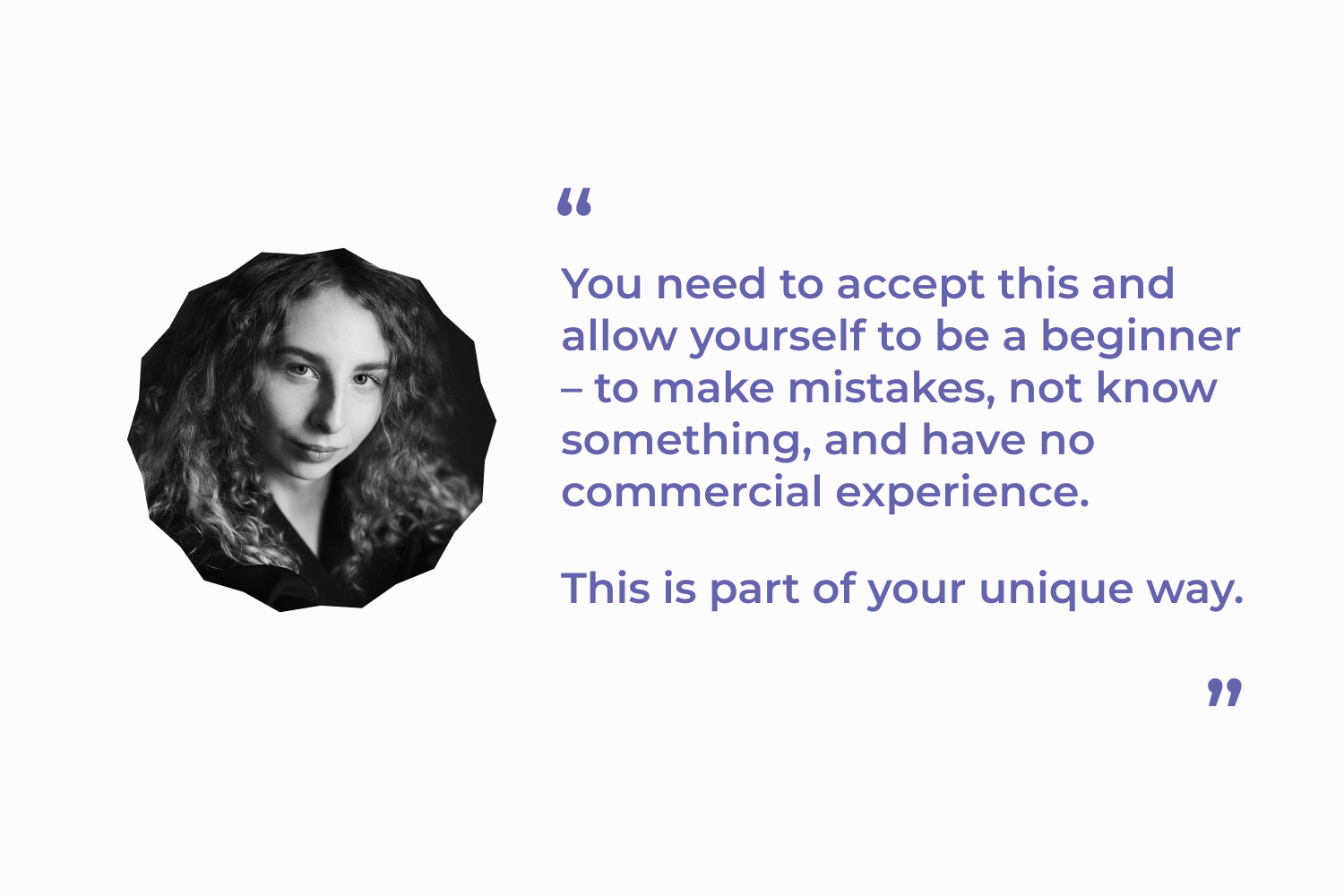
Spend time on pet projects. Come up with tasks for yourself, ask your friends to pretend to be customers, use services for writing briefs, and participate in challenges and competitions.
Don’t wait for real clients – do portfolio work.
What should a beginning graphic designer always remember at the beginning of their journey?
That design is a job like any other. This is not about spending a few hours a day and earning millions. You must invest time and energy, study, and practice to achieve worthy results.
It is also important to remember that design is a subjective thing. You shouldn’t be hurt that someone doesn’t like your work. This should not stop you and lead you astray.
I hope you enjoyed this conversation just as much as I did! If you have any questions for Valeria, please, leave them in the comments!
If you want more inspiring stories from creatives, check out our category with interviews 🙂
What are your concerns?
Thanks for your response!
Disclosure: MasterBundles website page may contain advertising materials that may lead to us receiving a commission fee if you purchase a product. However, this does not affect our opinion of the product in any way and we do not receive any bonuses for positive or negative ratings.

